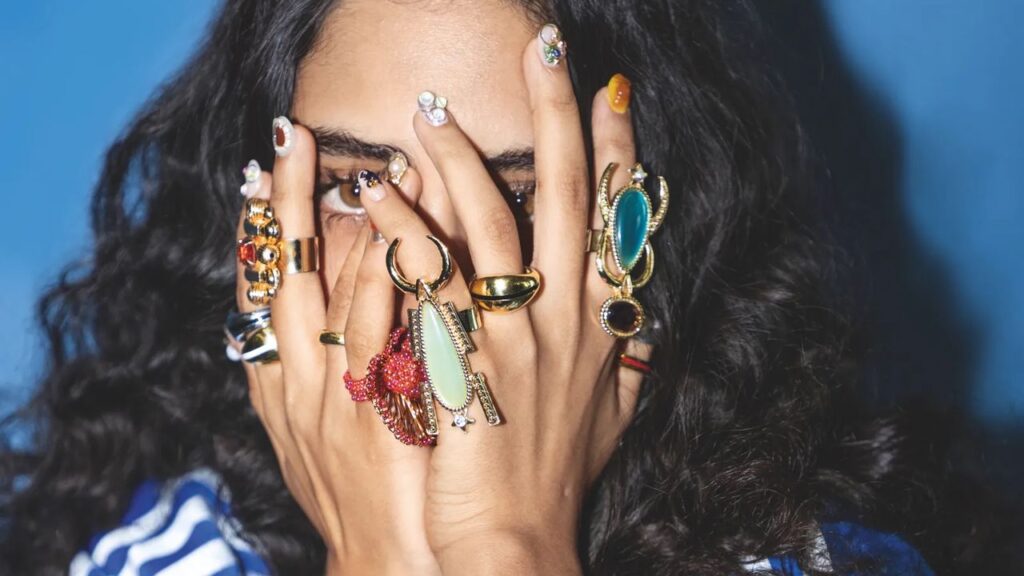There’s something undeniably transformative about a fresh manicure. Suddenly, you’re gesturing more, typing with flair, and savouring those ASMR-y clicks and clacks. Before you know it, you’re admiring your nails every few minutes. For many, it’s more than grooming—it’s a creative outlet. A way to reclaim control on days that feel otherwise unruly.
Every few weeks, I fall back into the rhythm: scrolling Pinterest for inspiration, picking a shade to match my mood, walking out with nails that feel like armour and adornment in equal measure.
Like most, I’ve long relied on gels and acrylics for their immaculate finish and staying power. They’re the only way many of us have managed to pull off those dreamy, hyper-detailed designs. But while the payoff is real, the aftermath rarely makes it to the grid.
Because here’s the rub: damage doesn’t always come from the polish, but from the process. Skipping professional removal, delaying fills, or over-filing can lead to thinning, peeling, or in severe cases, onycholysis—where the nail painfully lifts from the bed.
And then there’s the burning or stinging sensation some experience during application, a red flag that your nails need a break. Lifted nails, left untreated, can invite fungal infections that make things worse.
“The removal part is very important, that’s actually the worst thing many people neglect,” says celebrity nail artist Anisha Mulchandani. “When you try to pop off your acrylics or gels at home, you don’t realise you’re also stripping away layers of your natural nail.”
But the tide is turning. With a growing focus on safer formulations and smarter methods, a new generation of nail systems is making it possible to get lasting, artful results without compromising nail health. Below, a look at the nail art techniques leading the charge.
Polygels
A hybrid of acrylics and gels, Polygel offers a sweet spot: lighter and more flexible than acrylics, yet sturdier than traditional gels. Unlike regular gels, it doesn’t cure on its own, giving nail artists time to perfect the shape before setting it under UV light. Removal, however, isn’t a quick soak-off—it requires careful buffing, which may not appeal to those who favour low-effort maintenance.
Build-in-a-Bottle (BIAB)
The BIAB technique, invented by Daisy Kalnina, gained traction in Indian salons as a strengthening overlay. It mimics the look and feel of bare nails, only stronger and glossier. Not meant for dramatic extensions, it’s best applied by a skilled technician to avoid bulkiness. For those prioritising long-term nail health, BIAB is nothing short of revolutionary.
Japanese gels
Beloved for their buttery texture and self-levelling formula, Japanese gels are a go-to for intricate nail art. They offer long wear without the stiffness of acrylics, and thanks to their gentle base, they’re less likely to damage the natural nail. Lightweight and resilient, they balance beauty and care with quiet elegance.
Plexigel
Developed by CND (Creative Nail Design), Plexigel is a versatile, repair-friendly system that sits between a gel and an overlay. Ideal for those who want strength with flexibility, it’s often used to reinforce fragile nails or for minor repairs. The formula is designed to support the natural nail while offering long-lasting wear—think BIAB, but with more adaptability.
Fibreglass nails
Back from the archives, fibreglass nails are making a quiet comeback. Made using ultra-thin strands of fibreglass overlaid with resin, they’re featherlight and ideal for sensitive or damaged nails. The downside is that they’re fragile and time-intensive, better suited to lower-contact lifestyles.
Korean gels
Minimalist and manicure-forward, Korean gels are known for their clean, clear finishes and low-damage formulas. Like BIAB, they’re ideal for nail rehab phases, offering durability and gloss without unnecessary weight or pigment. They’re fast becoming a favourite among those who want strength without fuss.
Nail health and maintenance
“Nails are part of your skin and serve important protective functions—they’re not just cosmetic,” says dermatologist Dr Madhuri Agarwal. In other words: if your skincare gets a 10-step routine, your nails deserve more than a last-minute topcoat.

